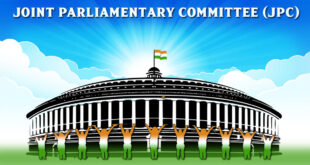An improved monitoring mechanism can play a key role
The advancing monsoon has brought relief to many parts of India, but its progress has been slower than average and the country is still in the midst of a rainfall deficit, with millions facing an acute water shortage. Water is essential for human survival, and for agriculture and industry. It is important that India — which has only 4% of the world’s renewable water resources but about 18% of the world’s population — consumes water more sensibly. In India’s pursuit of 100% electrification goal, the country’s installed power capacity will need to be doubled. Even with the growth of renewable energy (RE), coal has been projected to be the backbone of the electricity sector till 2030 and beyond. Managing the electricity needs of a country that’s already dealing with water scarcity will be a challenge. These guidelines can be strengthened by including other relevant inputs. First, TPPs should disclose the amount of water consumed by them in previous years, so that a baseline for water consumption per TPP can be established, and subsequent reductions in water consumption can be quantified. Second, these reporting requirements — currently in the form of an Excel sheet on the CEA website — must be added to the EP Rules, to accord the disclosure process greater transparency and enforceability. Third, TPPs should also be required to submit verifiable evidence (for example, water bills) to support and substantiate the disclosures. Without these, the self-reporting guidelines will remain weak. Finally, the data supplied by TPPs should be placed in the public domain, so that the parameters disclosed can be studied in the context of region-specific water shortages, outages in the plants, and future research and analysis in this field. Further, the relevant officials in charge of enforcement, across the Ministry and the CEA, should be identified, and their roles clearly defined. The implementation of these norms should include milestones and time-based targets, and periodic monitoring of the progress of TPPs in making improvements. In addition to reducing the stress caused by TPPs, shifting to a more aggressive RE pathway will help India achieve its global climate targets. However, this will need further work — particularly to regulate water consumption by specific RE technologies. The Ministry of New and Renewable Energy has taken a first step by issuing a notice to State governments on reducing water use for cleaning solar panels and to explore alternative mechanisms to ensure that solar panels remain efficient. India will need to balance the needs of its growing economy with its heightening water stress. Stringent implementation of standards for judicious water use by TPPs, combined with the promotion of RE and energy efficiency, will offer pathways for achieving these goals.
The writers work with the energy programme at the World Resources Institute, India
Check Also
Taiwan Quake Resilience
Concept : In the Taiwan region, the Philippine Sea plate is moving northwest towards the …
 Chinmaya IAS Academy – Current Affairs Chinmaya IAS Academy – Current Affairs
Chinmaya IAS Academy – Current Affairs Chinmaya IAS Academy – Current Affairs



